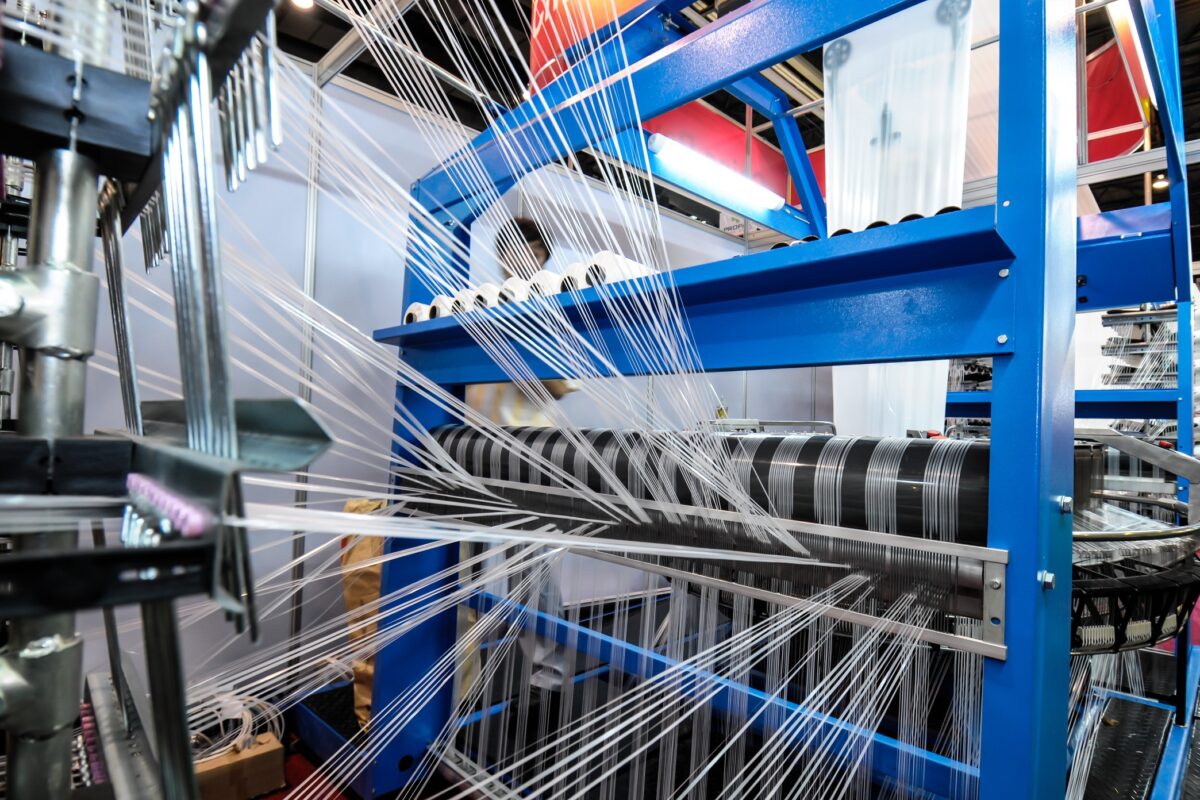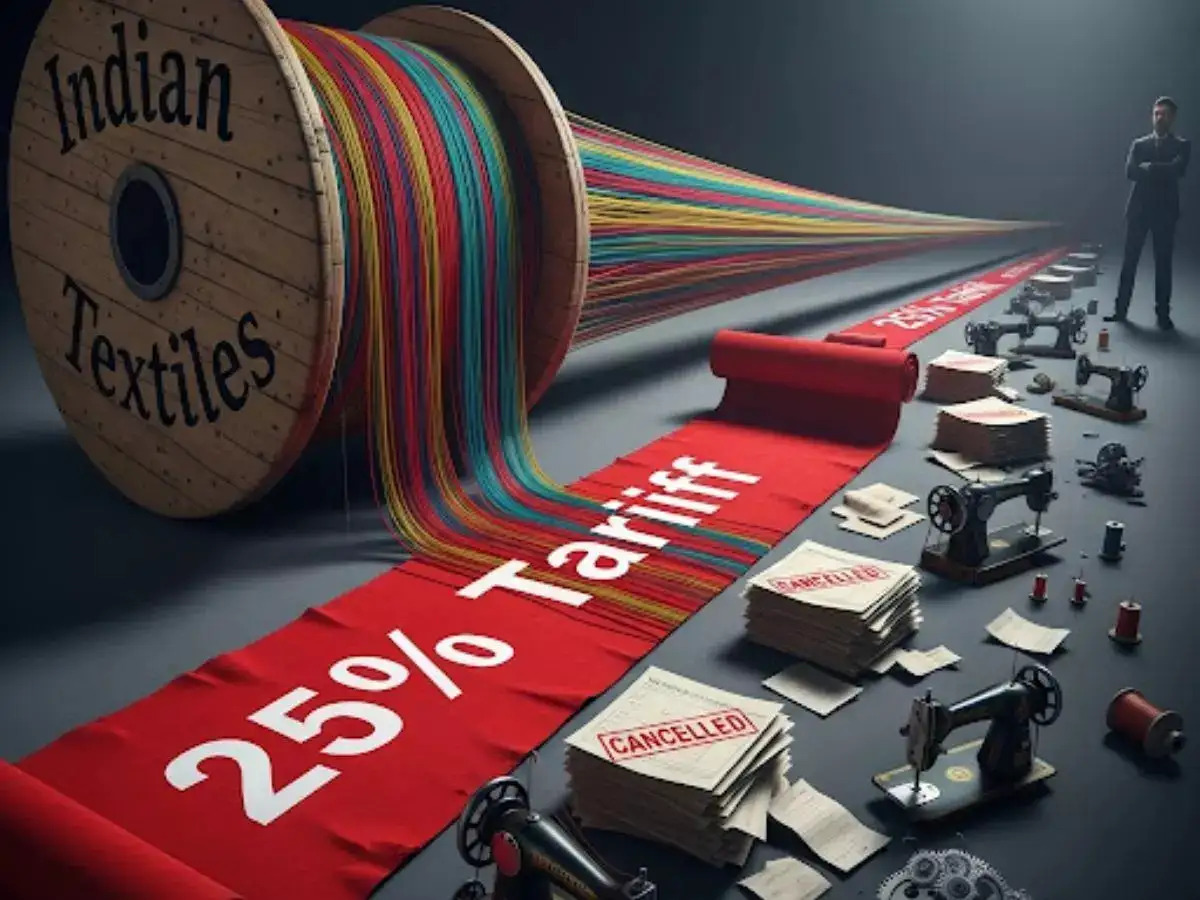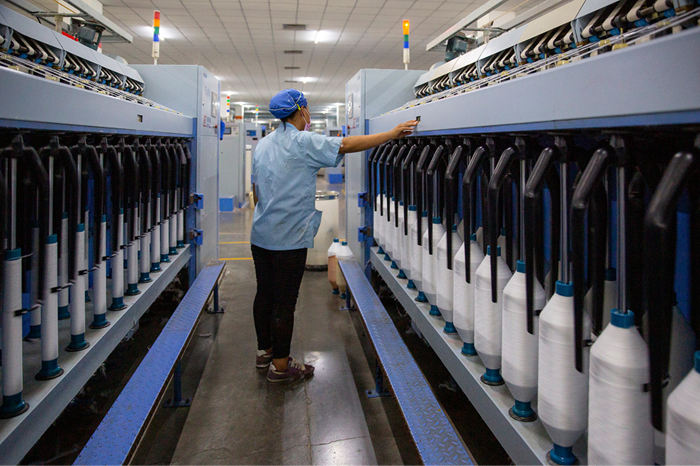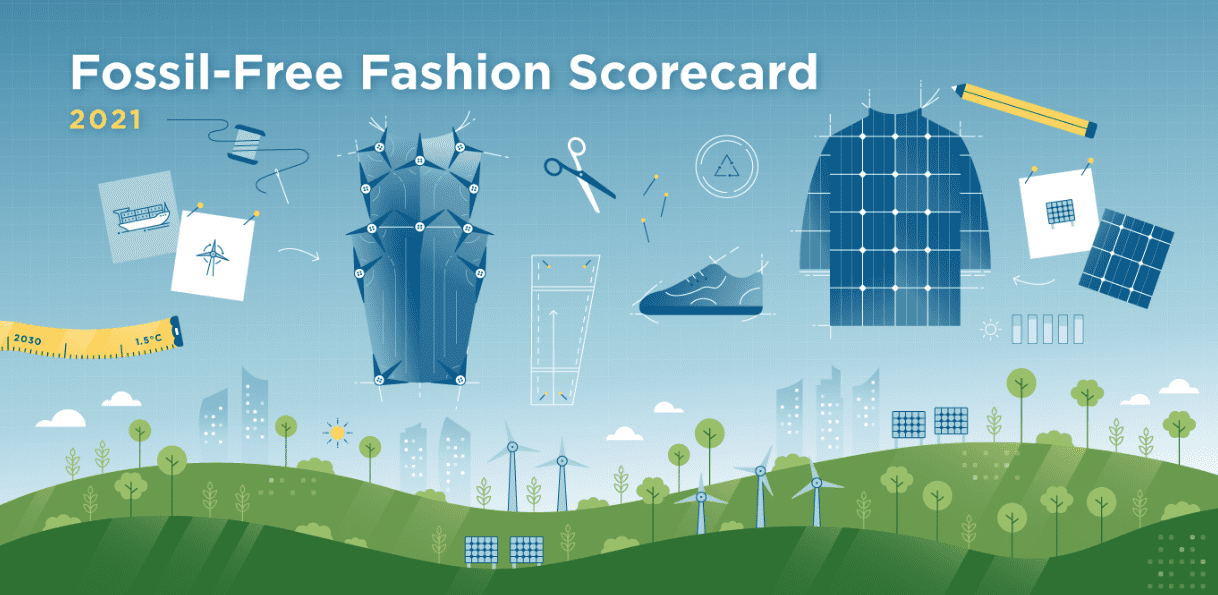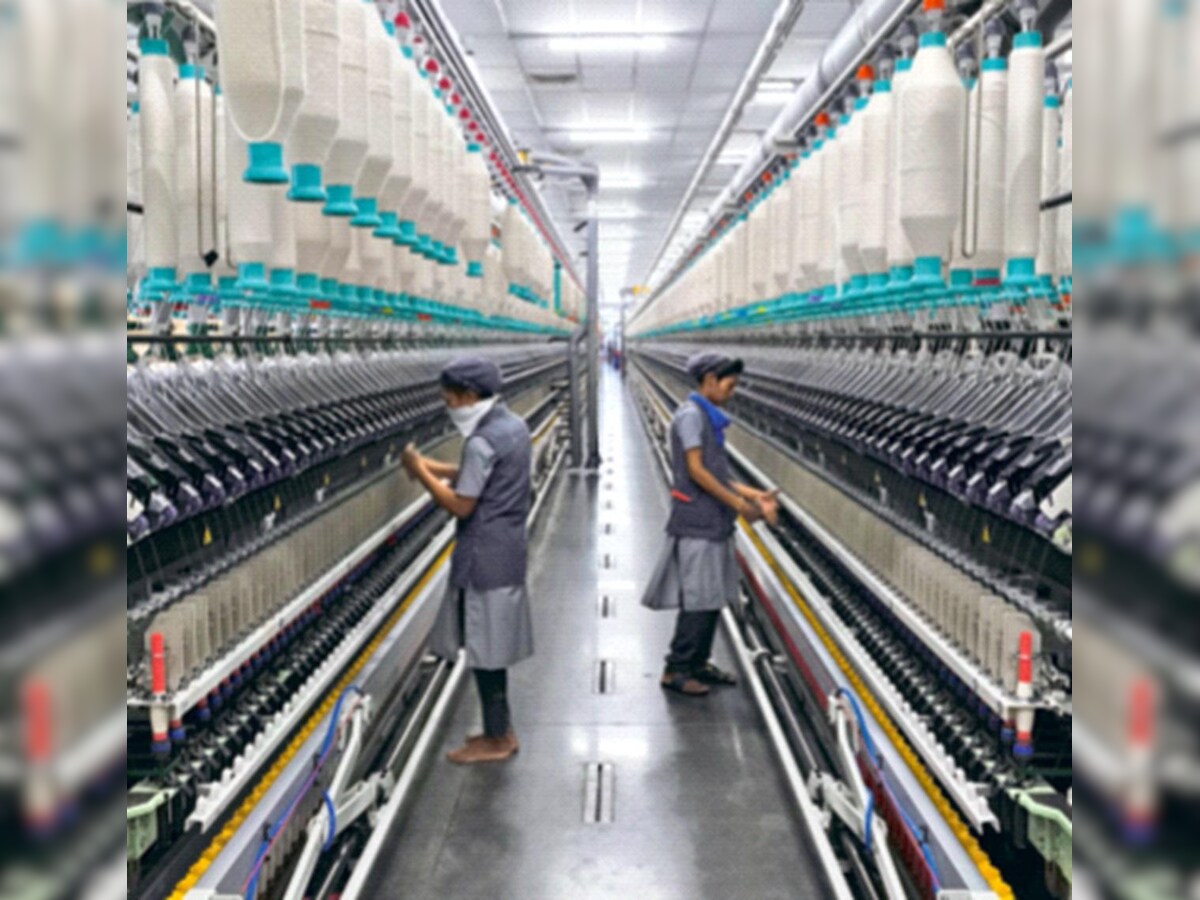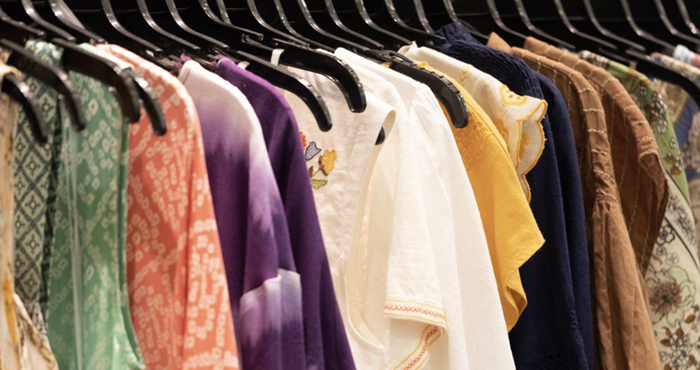FW
"Migrant women workers have a tough time working in garment factories, reveals a recent ICN (The India Committee of the Netherlands) and Clean Clothes Campaign report, ‘Labour without liberty – female migrant workers in Bangalore’s garment industry’. It found five out of the 11, ILO indicators for forced labour exist in the Bengaluru garment industry: abuse of vulnerability, deception as a result of false promises (wages etc.), restriction of movement in the hostel, intimidation and threats, and abusive working and living conditions."
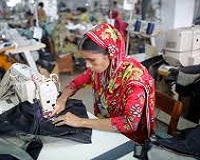
Migrant women workers have a tough time working in garment factories, reveals a recent ICN (The India Committee of the Netherlands) and Clean Clothes Campaign report, ‘Labour without liberty – female migrant workers in Bangalore’s garment industry’. It found five out of the 11, ILO indicators for forced labour exist in the Bengaluru garment industry: abuse of vulnerability, deception as a result of false promises (wages etc.), restriction of movement in the hostel, intimidation and threats, and abusive working and living conditions. Some of these aspects are also felt to a certain extent by the local workforce but are more strongly experienced by migrant workers. ICN is a Dutch human rights organisation dedicated to improving the lives of the marginalized in South Asia.
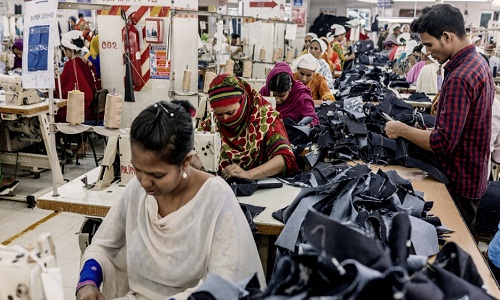
The three factories in the research belong to the largest garment manufacturing companies in Bengaluru. Together they employ more than 4,000 workers in various units in the country. According to export data, these are their buyers: Abercrombie & Fitch, Benetton, C&A, Calvin Klein and Tommy Hilfiger (both PVH), Columbia Sportswear, Decathlon, Gap, H&M, Levi Strauss, Marks & Spencer. Most of these brands have code of conducts that prohibit forced labour, child labour and other labour rights violations. Responding to an ICN report ‘Unfree and Unfair’ from January 2016 on the living and working conditions of migrants in Bengaluru, C&A, GAP, H&M and PVH had indicated some concrete commitments. Though there has been research by them affirming the findings of ‘Unfree and Unfair’ and a meeting with suppliers, after almost two years most of their commitments still have to be put in practice.
The real conditions on ground
While official statistics on migrants still do not exist, trade unions estimate that there are between 15,000 and 70,000 migrant women from northern states working in the Bengaluru garment industry. Before travelling to the factories, they are trained in skill development centres in Jharkhand or Odisha. These centres are often part of government sponsored schemes which fall under Skill India. Skill enhancement is one of the pillars of ‘Make in India’, Prime Minister Modi’s major initiative to create employment opportunities and stimulate economic growth.
Recruitment agents are known for not informing recruits about their legal entitlements. They promise salaries ranging from about €65 to €105 and other benefits like free accommodation and food. But the scene is completely difficult when they actually start working. They get paid less without having any additional help on stay and food. Owing to which, they live in hostels with cramped rooms and are not allowed to leave on weekday evenings. Only on Sundays, they are allowed two to three hours away from the hostel grounds. More alarming fact is that they claim to be eighteen, but in reality they are just 15 or 16 years old. Even beyond this, they are being abused in local language which they don’t understand and are being pushed to work faster. This plight takes a toll on them and they succumb to pressure.
With Donald Trump set to take charge as the next US President, the Indo American Chamber of Commerce (IACC) has suggested that India and the US should exchange their individual wish lists to fast track resolution of bilateral issues which are impeding accelerated investment flow. Broad contours of the wish lists should include amicable settlement of IPR issues leading to earliest conclusion of a bilateral investment treaty (BIT), totalisation agreement, a sound legal framework to expeditiously settle disputes, settlement of issues emanating from non-tariff measures and importantly, a fast solution to nagging visa problems, the Chamber said.
Said Indo American Chamber of Commerce (IACC) National President N V Srinivasan that there is a growing realisation among the US corporations that India, lying mid-way between West and the East, has the potential to emerge as a gateway for serving both markets. Here, it may be noted that US President-elect Trump has made it clear that he is averse to regional trade agreements like NAFTA, emerging Trans Pacific Partnership (TPP) etc which, according to him, have been militated against the US interests.
Flagging contentious issues that are coming up in the bilateral economic negotiations, such as retrospective tax regime in India, tardy intellectual property rights (IPR) protection and their enforcement, insistence on deciding economic disputes under Indian laws etc, the IACC President said these issues can be settled in a spirit of 'give and take'. Another area that needs immediate attention is the earliest conclusion of the double taxation avoidance treaty on social security taxes, often referred to as Totalisation Agreement, to avoid double taxation of social security both in the home country and the country where an employee works. Currently, temporary migrant Indian workers in the US have to make dual payment of social security contributions, both at home and in the US. India has around 3 lakh workers in the US at any given point of time, contributing over $2 billion every year towards social security taxes without getting any benefits.
To avail social security benefits in the US, one has to stay there for over 10 years, but work visas in that country are generally provided for a maximum of 6 years. Over the years, nearly $25 billion have been lost by India, IACC said.
Even as the impact of the currency crunch has hit regular arrivals of cotton, the Cotton Corporation of India (CCI) has begun purchasing the fibre at market rates from various parts of the country to ensure adequate supplies for its customers in the textiles industry. The Cotton Advisory Board has pegged the output at 351 lakh bales for the 2016-17 season starting October. The Cotton Advisory Board has pegged the output at 351 lakh bales for the 2016-17 season starting October. Similarly, the International Cotton Advisory Committee expects the cotton output in India this year to remain unchanged from 2015-16, at 5.8 million tonnes.
The Cotton Association of India, the apex cotton trade body, expects the output to be around 336 lakh bales, marginally lower than last year’s 337.75 lakh bales. Even as cotton trades firm on lower arrivals due to the impact of the currency crunch, the Cotton Corporation of India (CCI) has begun purchasing the fibre at market rates from various parts of the country to ensure supplies for its customers in the textiles industry.
Similarly, the International Cotton Advisory Committee expects the cotton output in India this year to remain unchanged from 2015-16, at 5.8 million tonnes. The Cotton Advisory Board has pegged the output at 351 lakh bales for the 2016-17 season starting October. Similarly, the International Cotton Advisory Committee expects the cotton output in India this year to remain unchanged from 2015-16, at 5.8 million tonnes. The Cotton Association of India, the apex cotton trade body, expects the output to be around 336 lakh bales, marginally lower than last year’s 337.75 lakh bales. Even as cotton trades firm on lower arrivals due to the impact of the currency crunch, the Cotton Corporation of India (CCI) has begun purchasing the fibre at market rates from various parts of the country to ensure supplies for its customers in the textiles industry.
The government of Bangladesh needs to define a wage level that can help satisfy the basic needs of workers in the readymade garment (RMG) sector and periodically review it to adjust it with the real prices, said Nazma Akter, General Secretary and Executive Director of the Awaz Foundation. And only through sufficient inspection and legal capacities, decent payment can be enforced, she added. She was quoting the report titled ‘The Workers’ Voice Report 2016’.
It is important to bring all the stakeholders together and identify their responsibilities and roles in improving working conditions, the report mentioned. The government, employers, workers and international buyers need to jointly address the manifold challenges in eliminating work deficits, providing a more effective regulatory environment and establish institutionalised multi-stakeholder cooperation, the report reads further.
The survey revealed some challenging working conditions in the factories, which can only be addressed in a multi-stakeholder approach. There has been progress in some of the indicators in comparison to 2013. However, the much-invoked paradigm shift after RanaPlaza did not materialise, it said.
With the gap between male and female workers laid bare in this study, gender equality analysed as a crosscutting objective has been identified as the primary challenge. Private governance based on voluntary external audits and internal codes of conduct has proven ineffective to substantially change the conditions in Bangladesh’s RMG factories. The Accord on Fire and Building Safety operated by mostly European retailers and the Alliance for Bangladesh Worker Safety, a group of North American retailers, have been conducting a series of inspections with little progress though as confirmed by other studies.
TeraSpin, a business unit of textile engineering company ATE, showcased its range of precision spinning components at the recently concluded textile machinery fair India ITME 2016 in Mumbai. TeraSpin closed the show on a high note with more orders and a good number of enquiries for its established product range like PK 2025, PK 1500, spindles with HF1, HF21 and HF100 inserts.
TeraSpin, the drafting components of which are already a preferred choice amongst OEMs across the world, displayed ring frame drafting system for cotton, synthetic fibres, and blends up to 45 mm length with smart cradle at the six-day exhibition. The company also displayed its ring frame drafting system for synthetic fibres from 40 to 60 mm length, roving frame drafting system for roving frames, and spindles in different configurations suitable for tape drive or tangential belt drive, suitable for hand doffing or auto-doffing ring frames.
Components like cradles and top rollers for a range of machines/drafting systems and latest innovations in the area of drafting and spindles for ring spinning machines were also among the products displayed by the company. The TeraSpin stall was brimming with curious visitors all through the exhibition period. Many spinners met TeraSpin technology experts to discuss their requirements of customised solutions on their existing machines.
TeraSpin felicitated Banswara Syntex Limited (BSL), a well-known, vertically integrated textile mill in India, for its continued support and patronage ever since the inception of TeraSpin in 2012 at the event. A small event to felicitate BSL was held at the TeraSpin stall in which RL Toshniwal, chairman of BSL, was presented with a memento by the ATE management team.
The ministry of textiles (MoT) has launched B-Twill Supply Management and Requisition Tool (Jute-Smart), an online portal. This portal has been created to facilitate end-to-end transactions related to procurement of B-Twill sacking. It was launched by Union textiles minister Smriti Irani on the occasion of Good Governance Day on December 25.
The portal is an integrated platform for use by all the stakeholders to allow easy access to information, more transparency and ease of doing business for the jute sector. An e-governance initiative by the government, Jute-Smart is a web-based application that facilitates purchase of jute bags from the jute industry by the State Procurement Agencies (SPAs).
The portal has been designed to integrate the process of indenting of B-Twill by the SPAs, help payment of required fund by SPAs into their respective bank accounts and allocate Production Control cum Supply Order (PCSO) by the Office of Jute Commissioner. The tool will also help in the generation of inspection calls by the jute mills and allocation of inspectors by the inspection agencies. It can also be used for uploading inspection report by the inspecting agency and dispatch information by loaders/jute mills for transportation and Container Corporation of India (Concor). Bill generation by jute mills and release of payment from respective banks to the jute mills is also possible on the tool along with complaint generation and real time reconciliation of funds remitted by the SPAs.
The Cabinet Committee on Economic Affairs (CCEA) decided to transfer the operation of purchase and supply of B-Twill sacking by SPAs from the Directorate General of Supplies & Disposal (DGS&D) to the Office of Jute Commissioner, Kolkata with effect from November 1, 2016. Annually about Rs 5,500 crore worth of jute sacking is procured through support by the Indian government to support the Indian jute workers and farmers.
In order to support the textile industry, the government of Pakistan has kept a 5 per cent customs duty on cotton yarn. This was informed to the Senate Standing Committee on Finance in writing by the Federal Board of Revenue (FBR) while briefing on the implementation of the committee's recommendations to the Finance Bill 2016.
Responding to the queries of the Senate Standing Committee on Finance, the FBR informed that specific recommendations pertaining to the customs duty had been implemented in the last budget. Like for example the reactivation of the Alternate Dispute Resolution Committee (ADRC) to resolve customs related disputes between taxpayers and tax collectors.
In budget 2016-17, the Senate recommended that the duty on cotton yarn should be kept at minimum slab rate of 5 per cent. The FBR responded by saying that the recommendation has been implemented through amendment in Finance Bill 2016, by amending the Fifth Schedule to the Customs Act 1969.
The Senate recommended to the National Assembly to rationalise the import process and simplify the structure of import duties for equipment used to produce solar energy. The Senate had recommended to the National Assembly that a Customs House should be established for gateway at Tehsil Qamardin Karez, Balochistan.
Qamardin Karez is already a notified customs station. However, it is not operational due to the law and order situation and lack of infrastructure like roads, electricity and banking facilities, the FBR added. The Senate recommended to the National Assembly that all the legal issues with Alternate Dispute Resolution Committee (ADRC) should be resolved to make it functional. The FBR responded that the recommendation has been implemented through amendment in Section 195C of the Customs Act, 1969.
According to a recent report, the people of China may have been the earliest people to make textile from silk fiber. The report comes from a group of scholars from the University of Science and Technology of China.
Scientists inspected silk fibroin through soil samples collected from three tombs at the Neolithic site of Jiahu, Henan province. Rough weaving tools and bone needles were also excavated from the site. This indicated that residents of Jiahu from as old as 8,500 years may have possessed basic weaving and sewing skills necessary for producing textiles.
Although earlier studies have provided evidence of the early emergence of weaving, there has long been a lack of direct evidence proving the existence of silk. According to the report, this new finding may be of great help to the study of early silk production as well as civilisation during the Neolithic Age by nearly 4,000 years.
As Britain prepares to expand its commercial reach once it has left the European Union, the UK and South Korea are set to sit for regular trade talks with luxury brands a particularly promising topic. A working group of ministers from the two countries will meet as many as four times a year to discuss removing barriers to commerce and prospects for future, ambitious trade opportunities after the UK exits the EU, a British government statement read.
After Brexit, Prime Minister Theresa May has promised to make the UK a leader in liberalising trade around the world. Yet the country is unable to strike its own free-trade deals or even being formal negotiations while still a member of the EU.
The pending talks with South Korea follow similar dialogues the UK has opened with Australia, China, the Gulf Cooperation Council, India, New Zealand and Norway in the six months since voters chose to leave the EU in a referendum. Trade and investment between the UK and South Korea is worth about 10.9 billion pounds ($13.6 billion) a year, according to British estimates. The UK is the fifth-largest foreign direct investor in South Korea. The same statement of the UK government read that South Korea is an especially promising market for luxury brands such as the Burberry Group that has 70 stores in the country and high-end automakers Jaguar Land Rover and Bentley.
Tapan Chowdhury, chairman of Square Group, has been re-elected as president of the Bangladesh Textile Mills Association (BTMA) for 2017 and 2018, the association said in a statement. The trade body also elected Mohammad Ali Khokon, managing director of Maksons Spinning Mills Ltd; Hossain Mehmood, managing director of Anwar Silk Mills Ltd; and Abdullah Al Mahmud, chairman of Mahin Group, as its vice presidents for the same period. The election took place at the association's 33 annual general meeting at Unique Trade Centre in Dhaka on December 24.

